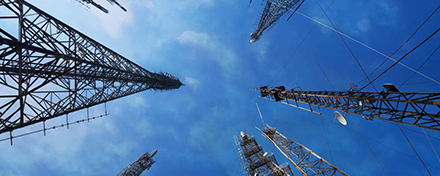|
SK Telecom and Nokia announced that they have successfully implemented what they claim is the world’s first cloud-based, software-defined RAN (SDRAN)—also known as Cloud RAN—in a commercial network. SDRAN is a next-generation, cloudbased RAN and cloud base station equipped with various information technology (IT) technologies based on open architecture. It is a new concept in technology in the sense that mobile communication functions are turned into virtual machines to be implemented on general-purpose server and integrated within the cloud.
A functional split of the protocol in the baseband processing is the architecture of SDRAN, and this relegates parts of the digital unit (DU) functions to the remote radio unit (RRU). Until now, a designated interface has been used for data transmission between the DU and the RRU, but with the new SDRAN, a more broadly used Ethernet-based, DU-RU interface is optimized for the communication environment and used for more efficient network configuration.
The interface also better handles signal delays, so that when a delay occurs, it adjusts the timing of data transmission and prevents a slowdown in transmission speed.

China Mobile Shanghai Branch and Huawei jointly have deployed what they claim is the world’s first wide-band massive MIMO site. A single module supports activation of three carriers on 2.6 GHz. The distributed network supports smooth evolution to Cloud RAN architecture.
The average spectral efficiency of the cells can be improved by threefold. The expedient delivery of this solution is guaranteed as only one optical fiber and one power cable are required to ensure smooth deployment from an engineering perspective.
NEC Corporation announced the development of a radio-sensing system that measures the usage of radio spectrum and visualizes its use in real time. The system aims to promote the effective usage of radio spectrum, such as the dynamic allocation of radio spectrum for the Internet of Things (IoT) and the allocation of radio spectrum for events or emergency situations.
The new system consists of a small radio spectrum sensor and software to visualize the status of radio spectrum. In particular, NEC developed a micro-electromechanicalsystems-based tunable filter that extracts only the radio signals at the frequency to be measured from the RF signals received by the antenna. The sensor extracts only the radio signals within a target frequency between 30 MHz and 3 GHz.
According to NEC, the system can perform measurements with 100 times greater sensitivity than existing technologies. The sensor can even perform high-precision measurements of weak RF signals in areas that are close to transmitter stations radiating strong radio signals.
NEC reduced the size of the radio spectrum sensor to the size of a smartphone by combining functions to eliminate unnecessary frequency signals and by amplifying the desired frequency to be measured into one chip. The radio spectrum sensor can therefore be installed in places such as street lights and building walls.
Full article: IEEE Vehicular Technology Magazine, Volume 12,
Number 1, March 2017 |